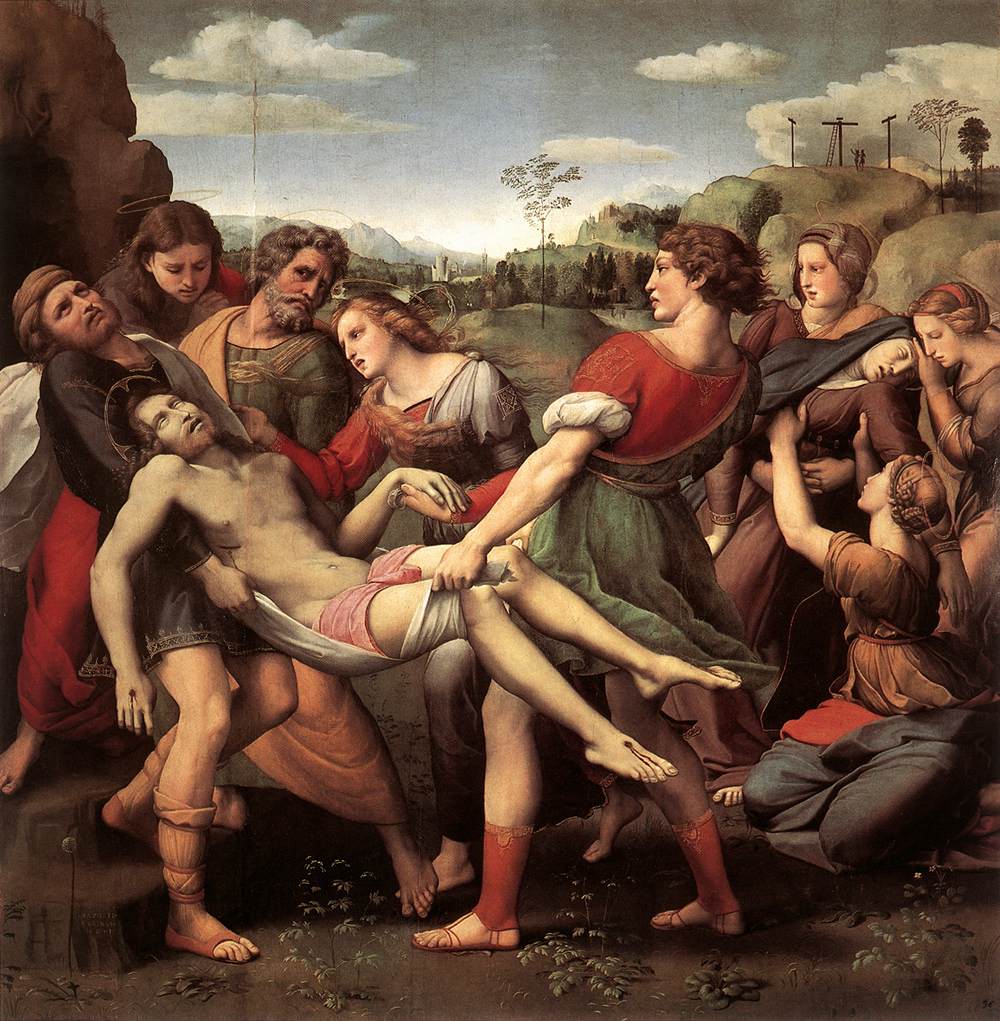The Entombment
Story
Among the figurative components which Raphael drew from his Florentine experience, those which derive from Michelangelo seem most prevalent in his last Florentine works. The work in which Michelangelo's importance to Raphael becomes most evident is the Deposition (Entombment). The panel was painted in 1507 in Perugia for Atalanta Baglioni as a votive offering in memory of her son, Grifonetto, killed in a piazza in Perugia in the course of a family feud.
The artist detaches himself both formally and iconographically from traditional representations of the scene. He does not depict the deposition itself, but the carrying of the dead Christ. The protagonists of the scene do not demonstrate their sorrow violently, but are reduced, through the Raphaelesque mode of feeling, to a sort of painful resignation. The vision of space is less geometric than the Florentine vision, and it appears freer and closer to nature. The influence of Michelangelo is strong, however, and can be perceived without doubt in the limp arm of Christ as well as in the female figure at the extreme right. The latter mirrors the figure of the Virgin in the Tondo Doni, which Michelangelo executed between 1504 and 1506. The formal vigour and sense of open space which characterize Michelangelo's painting certainly must have had a profound effect on Raphael.
There are three compositions (Faith, Hope and Charity) of the predella executed in a delicate monochrome (today in the Vatican Museum). Both the main panel and the predella were carried from Perugia to Rome by Pope Paul V. They were replaced by copies in 1608. The painting was subsequently included among the works taken by the French troops and was exhibited in Paris in the Napoleonic Museum from 1797 to 1815 when, following the restitutions ordered by the Congress of Vienna, it was returned to Rome.
